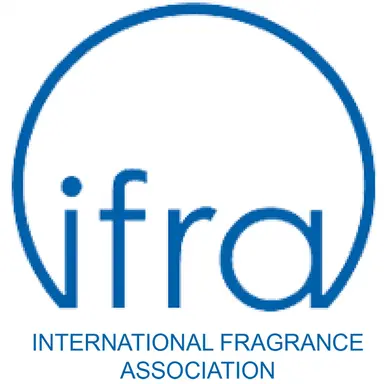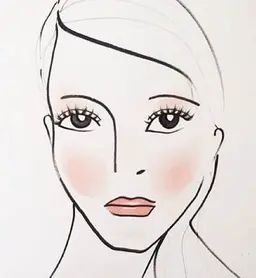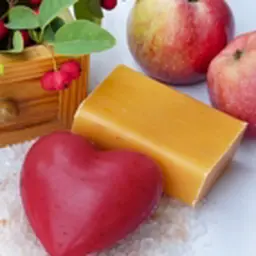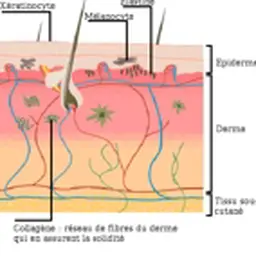
Founded in Geneva in 1973, IFRA is the International Fragrance Association, the official international body representing the fragrance industry. Its main goal is to ensure the safety of fragrance raw materials for health and the environment through a dedicated scientific program.
IFRA is also at the origin of a Code of Good Practice for Manufacturers and standards for the use of fragrance ingredients, with three types of self-regulation:
• Prohibition: bans on the use of some materials
• Restriction: rules on the quantities or maximum dose to be used or the products in which certain materials can be used
• Specification: other conditions on the type of material
IFRA establishes these rules according to the type of product, and has therefore first defined 11 categories. Following the publication of the 49th Amendment to the IFRA Standards, applicable from 10 May 2021 for new fragrance creations and from 10 May 2022 for existing creations, these categories have been changed from 11 to 12.
Category 1: Leave on products generally applied to lips
> Lip Products of all types (solid and liquid lipsticks, balms, clear or colored, etc.)
Products that contain sunscreen or sunblock are not listed separately and are included in the major product type (e.g. lip creams containing sunscreen are included in the lip products category).
> Children’s toys
This product type has been placed in Category 1 based on the absence of exposure data. Should exposure data become available, this product type may be re-categorized.
Category 2: Leave on products generally applied to axillae
> Deodorant and antiperspirant products of all types including any product with intended or reasonably foreseeable use on the axillae or labelled as such (spray, stick, roll-on, under-arm, deo-cologne, etc.)
> Body sprays (including body mist)
Category 3: Products generally applied to the face using fingertips
> Eye products of all types (eye shadow, mascara, eyeliner, eye make-up, eye masks, eye pillows, etc.) including eye care and moisturizer
> Facial make up and foundation
> Make-up remover for face and eyes
> Nose pore strips
> Wipes or refreshing tissues for face, neck, hands, body
These product types have been placed in Category 3 based on the absence of exposure data, but it is recognized that these products are generic to males and females and have similarities with the product types in this category. Should exposure data become available, these product types may be re-categorized.
> Body and face paint (for children and adults)
This product type has been placed in Category 3 based on the absence of exposure data, with the assumption that this product is applied with fingertips and not with the palms. Should exposure data become available, this product type may be re-categorized.
> Facial masks for face and around the eyes
Category 4: Fragrancing products generally applied to neck, face and wrists
> Hydroalcoholic and non-hydroalcoholic fine fragrance of all types (Eau de Toilette, Parfum, Cologne, solid perfume, fragrancing cream, aftershaves of all types, etc.)
> Fragranced bracelets
These product types have been placed in Category 4 based on the absence of exposure data and on assumptions which include the leave on use on the wrists. Should exposure data become available, this product type may be re-categorized.
> Ingredients of perfume kits and fragrance mixtures for cosmetic kits
> Scent pads, foil packs
> Scent strips for hydroalcoholic products
These product types have been placed in Category 4 based on the absence of exposure data, but it is recognized that these products have similarities to hydroalcoholic products applied to unshaved skin. Should exposure data become vailable, these product types may be re-categorized.
Category 5: Leave on products applied to the face and body using the hands (palms)
• 5A
> Body creams, oils, lotions of all types
> Foot care products (creams and powders)
> Insect repellent (intended to be applied to the skin)
> All powders and talc (excluding baby powders and talc)
• 5B
> Facial toner
> Facial moisturizers and creams
• 5C
> Hand cream
> Nail care products including cuticle creams, etc.
> Hand sanitizers
• 5D
> Baby cream/lotion, baby oil, baby powders and talc
Products that contain sunscreen or sunblock are not listed separately and are included in the major product type (e.g. lip creams containing sunscreen are included in the lip products category).
Category 6: Products with lip and oral exposure
> Toothpaste
> Mouthwash, including breath sprays
> Toothpowder, strips, mouthwash tablets
Exposure limits for these products are established to reduce the risk of peri-oral skin sensitization and as such, are not related to considerations of safe levels for ingestion. For the systemic toxicity assessment, only incidental ingestion is considered.
Category 7: Products applied to hair with hand contact
• 7A
> Hair permanent or other hair chemical treatments (rinse-off) (e.g. relaxers), including rinse-off hair dyes
Fragrance ingredients in hair permanent and other hair chemical treatments have been placed in Category 7. There are no exposure data on these product types. It is recognized that these product types involve repeated low frequency exposure. In order to define a per diem exposure, a conservative surrogate product has been chosen, which is leave-on conditioners. Should exposure data become available, these product types may be re-categorized.
• 7B
> Hair sprays of all types (pumps, aerosol sprays, etc.)
> Hair styling aids non sprays (mousse, gels, leave- on conditioners)
> Hair permanent or other hair chemical treatments (leave-on) (e.g. relaxers), including leave-on hair dyes
Fragrance ingredients in hair permanent and other hair chemical treatments have been placed in Category 7. There are no exposure data on these product types. It is recognized that these product types involve repeated low frequency exposure. In order to define a per diem exposure, a conservative surrogate product has been chosen, which is leave-on conditioners. Should exposure data become available, these product types may be re-categorized.
> Shampoo - Dry (waterless shampoo)
> Hair deodorizer
Category 8: Products with significant anogenital exposure
> Intimate wipes
> Baby wipes
Category 9: Rinse off products with body and hand exposure
> Bar soap
> Shampoo of all type
> Cleanser for face (rinse-off)
> Conditioner (rinse-off)
> Liquid soap
> Body washes and shower gels of all types
> Baby wash, bath, shampoo
> Bath gels, foams, mousses, salts, oils and other products added to bathwater
> Foot care products (feet are placed in a bath for soaking)
> Shaving creams of all types (stick, gels, foams, etc.)
> All depilatories (including facial) and waxes for mechanical hair removal
> Shampoos for pets
It was assumed that the exposure to humans from shampoos for pets could be expected to be similar to hand dishwashing liquids.
Category 10: Household care products with mostly hand contact
• 10A
> Hand wash laundry detergent (including concentrates)
> Laundry pre-treatment of all types (e.g. paste, sprays, sticks)
> Hand dishwashing detergent (including concentrates)
In an abundance of caution, the exposure for liquid soaps (0.2 mg/cm2/day) is being used for the Hand Dishwash Liquid products (the HERA value is 0.01 mg/cm2/day). This this takes into account consumers who use hand dishwash liquids as a liquid soap.
> Hard surface cleaners of all types (bathroom and kitchen cleansers, furniture polish, etc.)
> Machine laundry detergents with skin contact (e.g. liquids, powders) including concentrates
> Dry cleaning kits
> Toilet seat wipes
> Fabric softeners of all types including fabric softener sheets
> Household cleaning products, other types including fabric cleaners, soft surface cleaners, carpet cleaners, furniture polishes sprays and wipes, leather cleaning wipes, stain removers, fabric enhancing sprays, treatment products for textiles (e.g. starch sprays, fabric treated with fragrances after wash, deodorizers for textiles or fabrics)
> Floor wax
> Fragranced oil for lamp ring, reed diffusers, pot-pourri, liquid refills for air fresheners (non-cartridge systems), etc.
> Ironing water (Odorized distilled water)
• 10B
> Animal sprays - sprays applied to animals of all types
> Air freshener sprays, manual, including aerosol and pump
> Aerosol/spray insecticides
Category 11: Products with intended skin contact but minimal transfer of fragrance to skin from inert substrate
• 11A
> Feminine hygiene conventional pads, liners, interlabial pads
> Diapers (baby and adult)
> Adult incontinence pant, pad
> Toilet paper (dry)
• 11B
> Tights with moisturizers
> Scented socks, gloves
> Facial tissues (dry tissues)
> Napkins
> Paper towels
> Wheat bags
> Facial masks (paper/protective) e.g. surgical masks not used as medical device
> Fertilizers, solid (pellet or powder)
Category 12: Products not intended for direct skin contact, minimal or insignificant transfer to skin
> Candles of all types (including encased)
> Laundry detergents for machine wash with minimal skin contact (e.g. Liquid tabs, pods)
> Automated air fresheners and fragrancing of all types (concentrated aerosol with metered doses (range 0.05-0.5mL/spray), plug-ins, closed systems, solid substrate, membrane delivery, electrical, powders, fragrancing sachets, incense, liquid refills (cartridge), air freshening crystals)
> Air delivery systems
> Cat litter
> Cell phone cases
> Deodorizers/maskers not intended for skin contact (e.g. fabric drying machine deodorizers, carpet powders)
> Fuels
> Insecticides (e.g. mosquito coil, paper, electrical, for clothing) excluding aerosols/sprays
> Joss sticks or incense sticks
> Dishwash detergent and deodorizers - for machine wash
> Olfactive board games
> Paints
> Plastic articles (excluding toys)
> Scratch and sniff
> Scent pack
> Scent delivery system (using dry air technology) > Shoe polishes
> Rim blocks (Toilet)
Due to the expected negligible skin exposure from such products the risk of induction of dermal sensitization through the normal formulation and use of such products is considered to be negligible. As such, the concentration of fragrance ingredient is not restricted in the finished product.
Source
• Guidance for the use of IFRA Standards, IFRA-RIFM, 12 December 2019












